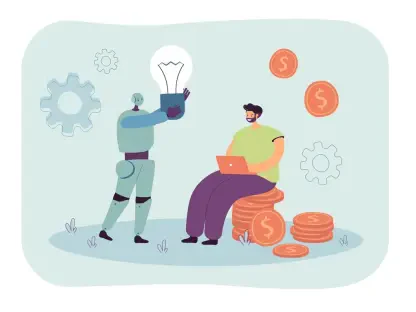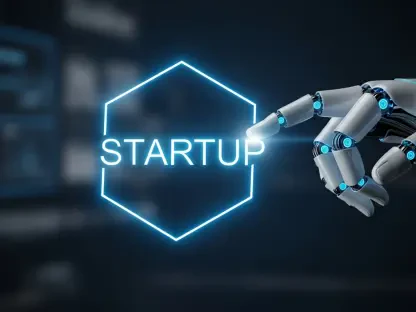Vijay Raina is an esteemed expert in enterprise SaaS technology and tools, known for his thought leadership in software design and architecture. With a deep understanding of modern software solutions, Raina has made significant contributions to the industry. Today, we delve into the exciting journey and developments of Backstage, an open-source framework that has revolutionized the internal developer portal landscape.
Can you tell us about the initial motivation behind creating Backstage at Spotify?
Backstage was conceived at Spotify to enhance developer productivity and autonomy. The initial motivation was to create a unified portal that could manage various tools and services, streamlining the development process. The goal was to reduce complexity and foster a more efficient development environment.
How did Backstage evolve from an internal tool to an open-source project?
The transition from an internal tool to an open-source project was driven by the realization that many companies face similar challenges. By open-sourcing Backstage, Spotify aimed to create a collaborative ecosystem where the broader community could contribute and benefit from shared solutions. This decision was also influenced by the growing trend of companies moving towards open-source technologies for better scalability and innovation.
What were some of the challenges in transitioning from a proprietary tool to an open-source framework?
One of the primary challenges was managing the divergence between Spotify’s internal version and the open-source version. Ensuring that the open-source version remained robust and scalable while still aligning with internal needs required significant effort. Additionally, dealing with external contributions and maintaining a high-quality codebase posed challenges that had to be meticulously managed.
Who are some of the major adopters of Backstage, and how has their adoption impacted the project’s growth?
Major adopters include companies such as Airbnb, Booking.com, H&M, and Toyota North America. Their adoption has greatly contributed to Backstage’s growth, as each company brings unique requirements and enhancements to the project. This diversity has enriched the ecosystem and propelled its development, ensuring Backstage remains a leading solution in the industry.
Backstage recently celebrated its fifth anniversary. What do you think contributed to its widespread adoption in such a short period?
The widespread adoption can be attributed to Backstage’s flexibility and the vibrant open-source community supporting it. Its ability to integrate with a wide range of tools and services makes it a versatile solution for various organizations. Additionally, the support from the Cloud Native Computing Foundation (CNCF) has provided a robust framework for its success.
How important has the open-source community been to the development and success of Backstage?
The open-source community has been vital to Backstage’s development. With around 1,600 contributors, the community’s input has ensured continuous innovation and improvement. The collaborative nature has allowed Backstage to evolve rapidly and meet the diverse needs of its users.
Can you discuss the significance of having 1,600 contributors and over 230 plugins in the Backstage ecosystem?
Having such a large number of contributors and plugins signifies a thriving, diverse community. This ecosystem fosters innovation as contributors bring varied experiences and perspectives. The extensive plugin library enhances Backstage’s functionality, making it adaptable to numerous use cases.
How do you manage contributions from such a large and diverse group of developers?
Managing contributions involves clear guidelines, robust documentation, and effective communication channels. Ensuring code quality and consistency is achieved through a structured review process and collaborative tools that help streamline the contribution process.
What role does the CNCF play in supporting Backstage’s development?
The CNCF provides essential support through resources, security audits, and governance frameworks, helping Backstage maintain high standards of quality and performance. Their endorsement has also boosted Backstage’s credibility and adoption across the industry.
How has Spotify’s internal team benefited from using Backstage?
Spotify’s internal teams have seen significant improvements in productivity and developer experience. Backstage has centralized various tools and services, reducing context-switching and enabling faster feature development. This unified approach has also improved onboarding processes and overall developer satisfaction.
What does the current adoption rate of Backstage look like within Spotify?
The adoption rate within Spotify is impressive, with a 96% usage rate among research and development workers. This widespread adoption demonstrates Backstage’s effectiveness in enhancing developer workflows and productivity.
How do you handle the divergence between Spotify’s internal version of Backstage and the open-source version?
The internal and open-source versions are managed through regular synchronization efforts. The goal is to keep both versions as aligned as possible by continually migrating and refactoring features between them. This ensures that improvements benefit both internal and external users.
How does Backstage enhance the developer experience, especially in large organizations?
Backstage enhances the developer experience by providing a centralized portal that integrates various tools and services, streamlining workflows and reducing cognitive load. This consolidation fosters better collaboration and faster development cycles, particularly beneficial in large organizations where managing multiple systems can be complex.
In what ways does Backstage support T-shaped developers at Spotify?
Backstage supports T-shaped developers by providing a consistent, standardized environment across different domains. This allows developers to dive deep into their areas of expertise while maintaining broad knowledge of other domains, facilitating cross-functional collaboration and flexibility.
What is the Spotify Portal, and how does it relate to Backstage?
The Spotify Portal is a pre-built internal developer portal SaaS offering that extends the capabilities of Backstage. It provides additional features and integrations tailored to enhance developer productivity further, offering a seamless experience for managing various software development tasks.
Can you elaborate on the new data experience plugin for Backstage?
The new data experience plugin is designed to help organizations discover, understand, and manage business data within Backstage. It integrates with data warehouse tools and models data in the Backstage software catalog, providing visibility into the data ecosystem and ensuring consistent data management alongside software entities.
How do plugins like Soundcheck contribute to the overall developer experience?
Plugins like Soundcheck focus on team health and alignment around DevOps best practices. They provide tools for maintaining quality and standardizing processes, which are crucial for efficient and effective software development. These plugins enhance the overall developer experience by automating checks and balances that ensure best practices are followed.
How is Backstage preparing to address the rapid advancements in AI and its impact on software development?
Backstage is incorporating AI advancements through features like the AiKA plugin, an AI knowledge assistant. This integration aims to enhance developer productivity by providing AI-driven insights and assistance, ensuring developers can keep pace with the rapid advancements in AI technology.
What are the features of the new AiKA plugin, and how does it integrate into Backstage?
The AiKA plugin is an AI chatbot that integrates into Backstage, IDEs, and communication tools like Slack. It uses a retrieval-augmented generation model to understand organizational data and provide contextual assistance. AiKA helps standardize and maintain quality by offering real-time support and insights to developers.
What is your forecast for the future of platform engineering?
The future of platform engineering looks promising as more organizations recognize the value of improved developer experiences and productivity. Platform engineering will continue to evolve, with a stronger emphasis on AI integration, automation, and consistency across development environments. This evolution will drive faster innovation and higher quality in software development.









